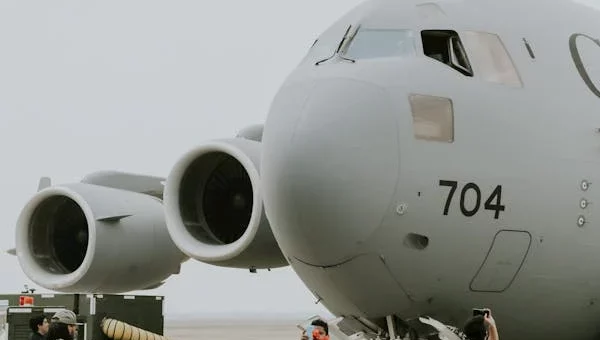
Introduction
The Airbus A320 and Boeing 737 are two of the most popular single-aisle commercial aircraft in the world. With decades of rivalry, these aircraft dominate short-to-medium-haul markets globally. Although they may seem similar to passengers, aviation professionals know that their differences in design, performance, and operation are significant. This in-depth guide explores the key differences between Airbus A320 and Boeing 737 aircraft in 2025.
1. Design and Engineering Comparison
Both aircraft families were designed with different philosophies, which reflect in their airframes, systems, and control architectures.
a. Airframe and Dimensions
While similar in size, subtle design differences affect flight characteristics and capacity.
| Feature | Airbus A320neo | Boeing 737 MAX 8 |
|---|---|---|
| Length | 123.3 ft | 129.8 ft |
| Wingspan | 117.5 ft | 117.1 ft |
| Height | 38.6 ft | 40.4 ft |
| Cabin Width | 12.1 ft | 11.7 ft |
- The A320 features a slightly wider fuselage, allowing for more spacious cabin arrangements.
- The 737’s longer fuselage in some variants accommodates more passengers but with narrower aisles.
These differences influence boarding efficiency, overhead bin space, and seat layout flexibility.
b. Materials and Manufacturing
- Airbus emphasizes composite materials in winglets and fuselage components.
- Boeing uses a mix of aluminum alloys and composite materials for weight reduction.
- Both aircraft are assembled using automated systems, but Airbus has adopted more robotics in its final assembly.
The engineering philosophies align with broader company strategies in innovation and cost efficiency.
2. Cockpit and Avionics Technology
Pilots often highlight major differences in flight control systems, displays, and cockpit philosophy.
a. Fly-by-Wire vs. Conventional Controls
- Airbus A320 uses a full fly-by-wire system with side-stick controllers.
- Boeing 737 retains mechanical backup with yoke-style controls.
Key Advantages:
- A320: Computer-managed flight control prevents pilot over-input.
- 737: Pilot retains more direct control, which some pilots prefer for its tactile feedback.
These differences affect pilot training, handling characteristics, and system automation levels.
b. Cockpit Display and Interface
| Feature | Airbus A320 | Boeing 737 |
| Control Device | Side Stick | Control Yoke |
| Displays | LCD screens (standardized early) | LED upgrade in MAX |
| Flight Software | Fly-by-wire logic | Traditional with digital augmentation |
- A320 cockpits are more standardized across the family, easing pilot transition.
- Boeing’s interface evolved more gradually, retaining legacy cues for experienced pilots.
3. Performance and Efficiency
Operational performance is critical to airline profitability. Each aircraft family delivers competitive, but distinct capabilities.
a. Range and Payload
| Feature | Airbus A320neo | Boeing 737 MAX 8 |
| Range | 3,400 nmi | 3,550 nmi |
| Max Takeoff Weight | 174,200 lbs | 181,200 lbs |
| Max Passengers | ~180 | ~189 |
- Boeing 737 MAX 8 offers slightly more range and higher MTOW.
- Airbus A320neo emphasizes fuel economy and weight distribution.
b. Fuel Efficiency and Noise Reduction
Both aircraft have introduced new engines:
- A320neo: Pratt & Whitney PW1100G or CFM LEAP-1A
- 737 MAX: CFM LEAP-1B
Benefits include:
- 15–20% improved fuel burn over earlier models.
- Noise footprint reductions by 50%.
- Optimized winglets (sharklets on A320, split scimitar on 737).
The A320neo is slightly quieter, while the MAX can carry more payload per trip.
4. Passenger Comfort and Cabin Experience
Although both serve similar routes, passengers often notice differences in comfort.
a. Seating and Cabin Layout
- A320 offers wider seats and aisles due to its broader fuselage.
- 737 cabins may feel more confined, especially in full configuration.
| Cabin Feature | A320neo | 737 MAX |
| Seat Width | 18″ (typical) | 17.2″ (typical) |
| Aisle Width | ~20″ | ~17″ |
- Both feature modern LED lighting, improved ventilation, and larger bins.
- Airlines can configure both for 2-class or all-economy layouts.
b. Cabin Systems and In-Flight Experience
- Airbus uses centralized cabin management systems to monitor temperature, lighting, and crew systems.
- Boeing’s Sky Interior on the 737 MAX improves passenger ambiance.
Each aircraft supports Wi-Fi, USB ports, and streaming IFE based on airline choices.
5. Airline Preference and Market Adoption
The market share and airline preferences provide real-world insights into each aircraft’s appeal.
a. Global Orders and Deliveries
| Model | Orders (as of 2025) | Deliveries |
| Airbus A320 Family | 17,000+ | 12,000+ |
| Boeing 737 Family | 16,000+ | 11,000+ |
- The A320neo has slightly surpassed the 737 MAX in recent orders.
- Asia and Europe favor the A320neo, while the 737 remains popular in North America.
b. Fleet Commonality and Operational Strategy
- Airlines with a mixed fleet may prefer Airbus for ease of pilot cross-training.
- Boeing offers strong aftermarket support and an established presence.
Examples:
- Ryanair exclusively operates 737s.
- EasyJet and IndiGo have all-Airbus fleets.
- United Airlines and American Airlines operate mixed fleets.
Fleet strategy depends on maintenance ecosystems, pilot pools, and manufacturer relationships.
Conclusion: A Tale of Two Titans
The key differences between Airbus A320 and Boeing 737 illustrate how two competing philosophies can produce successful, yet distinct aircraft. While the A320 emphasizes automation, cockpit standardization, and cabin width, the 737 focuses on pilot control, payload, and evolutionary familiarity.
Ultimately, passengers may only notice seat width and cabin ambiance, but for airlines, the choice between Airbus and Boeing affects training, maintenance, and profit margins.